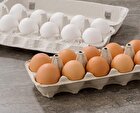Iranian Company Raise Yellow Mealworm Beetles as Source for Animal Feeding

Mealworms are the larvae of two species of darkling beetles of the Tenebrionidae family. One of them is the yellow mealworm beetle (YMB) (Tenebrio molitor Linnaeus) and another one is smaller and less common dark or mini mealworm beetle (Tenebrio obscurus Fabricius). Mealworm beetles are indigenous to Europe and are now distributed worldwide, including in Iran.
Masoumeh Chakhmaghi, the executive director of the project to raise yellow mealworm beetles at a technology company based in the growth center of Gorgan University of Agricultural Sciences and Natural Resources in Northern Iran told Iranian media that she and her teammates in their company have been conducting studies since 2017 in the field of raising special insects as a source of food to be used in poultry, livestock and aquatic industries.
“In recent years, due to climate change and its consequences such as drought, water scarcity and greenhouse gases emission, we developed the project of raising useful insects. For these studies we chose raising the yellow mealworm beetles as one of the indigneous species of Iran,” she said.
The researcher noted that the larvae of the yellow mealworm beetles is a great sources of protein which can be very helpful in feeding animals, birds and fish.
“The larvae of these beetles has 47-60% protein and 31-43% fat and are considered a potential alternative to other sources of protein in poultry feeding instead of using other sources of food such as soybean and fish food,” Chakhmaghi said.
“An increase in the amount of protein in animal food increases the cost of production and its decrease causes a decrease in growth. Fish food makes up 35-55% of the fish diet, while beetle larvae will be a suitable alternative for the continued growth and development of aquaculture in the coming years, as well as preserving marine resources for future generations,” she explained more.
The director of research and development department of the Iranian technology company further said that the larvae of yellow mealworm beetles is very rich in protein, adding that “since the protein obtained from the larvae of this insect is of animal origin, it has a high absorption rate in the body, while protein of plant origin such as mushroom has only 20% absorption rate."
Chakhmaghi went on to say that after conducting researches, they began producing animal and aquatic animal food from the larvae of yellow mealworm beetles, adding, “In this company, we managed to implement the semi-industrial phase of rearing and producing larvae and pupae of this insect.”
She added that they have obtained necessary permits from Iran's Department of Environment and other relevant organizations.
Emphasizing that the human body cannot produce some amino acids and the larvae of these beetles can supply these materials to the body, he added, “if this insect is consumed by animals, such vitamins will find way to the human food cycle too.”
Referring to the raising process of the yellow mealworm beetles in the semi-industrial level for the production of animal feed, Chakhmaghi said, “In this part of the industrial phase, one-third of the beetles are separated to continue their life cycle, but two-thirds of the remaining larvae are dried and processed to produce animal food.”
4155/i





















